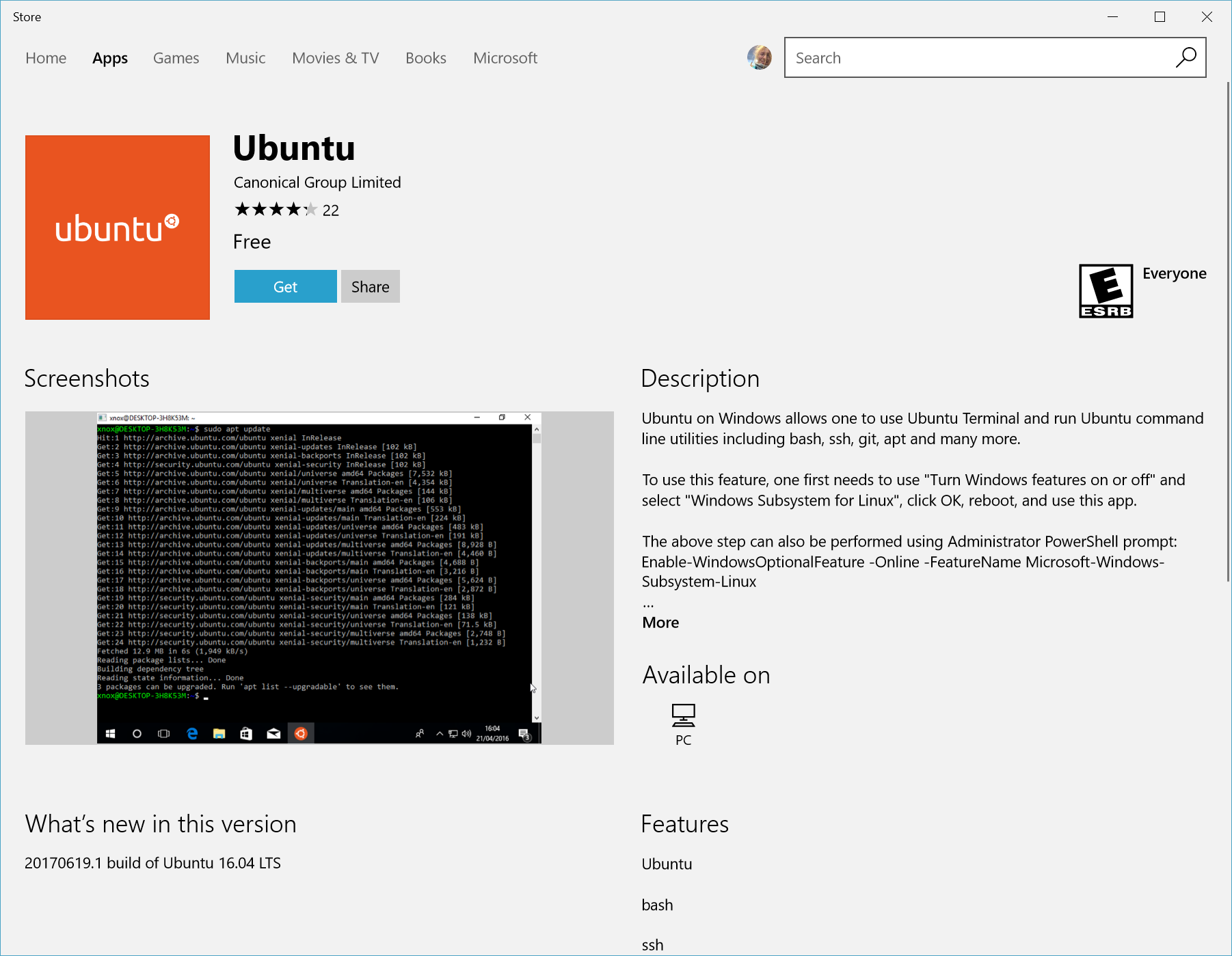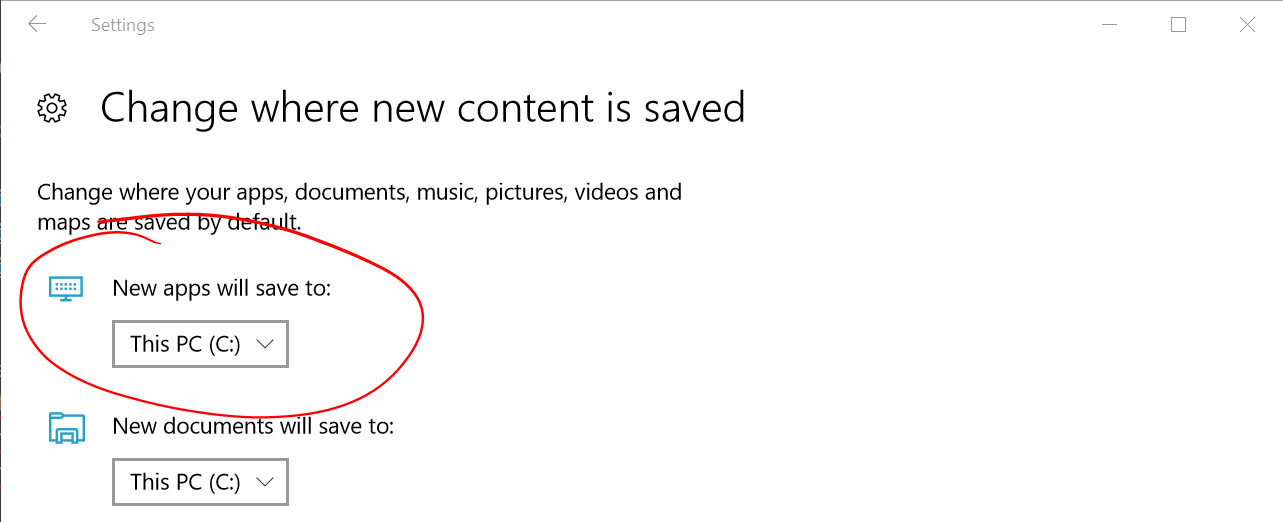Windows: Installing WSL feature - giobim/Some-help-from-my-Friends GitHub Wiki
This is the Windows Subsystem for Linux Installation Guide for Windows 10.
Before installing any Linux distros for WSL, you must ensure that the "Windows Subsystem for Linux" optional feature is enabled:
Install the Windows Subsystem for Linux
-
Open PowerShell as Administrator and run:
Enable-WindowsOptionalFeature -Online -FeatureName Microsoft-Windows-Subsystem-Linux -
Restart your computer when prompted.
Install your Linux Distribution of Choice
To download and install your preferred distro(s), you have three choices:
- Download and install from the Microsoft Store (see below)
- Download and install from the Command-Line/Script (read the manual installation instructions)
- Download and manually unpack and install (for Windows Server instructions here)
Windows 10 Fall Creators Update and later: Install from the Microsoft Store
This section is for Windows build 16215 or later. Follow these steps to check your build.
-
Open the Microsoft Store and choose your favorite Linux distribution.

Figure 1. Microsoft StoreThe following links will open the Microsoft store page for each distribution:
-
From the distro's page, select "Get"

Figure 2. Distro Page
Complete initialization of your distro
Now that your Linux distro is installed, you must initialize your new distro instance once, before it can be used.
Troubleshooting
Below are related errors and suggested fixes. Refer to the WSL troubleshooting page for other common errors and their solutions.
-
Installation failed with error 0x80070003
- The Windows Subsystem for Linux only runs on your system drive (usually this is your C: drive). Make sure that distros are stored on your system drive:
- Open Settings -> Storage -> More Storage Settings: Change where new content is saved Picture of system settings to install apps on C: drive

Figure 3. App Storage
-
WslRegisterDistribution failed with error 0x8007019e
The Windows Subsystem for Linux optional component is not enabled:
- Open Control Panel -> Programs and Features -> Turn Windows Feature on or off -> Check Windows Subsystem for Linux or using the PowerShell cmdlet mentioned at the begining of this article.